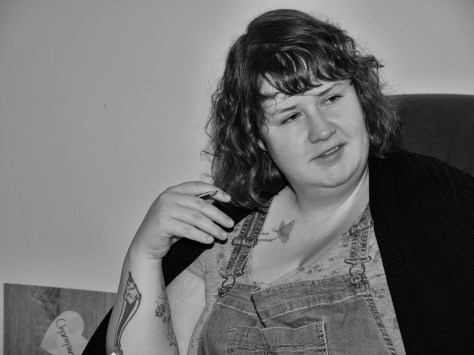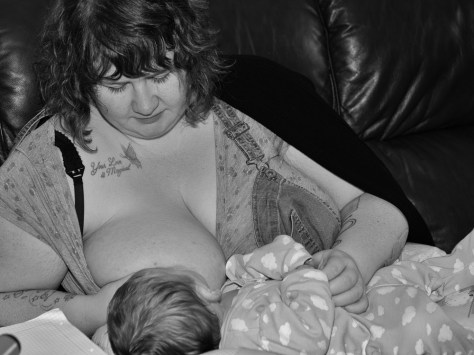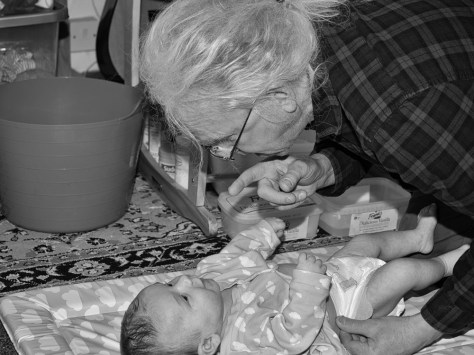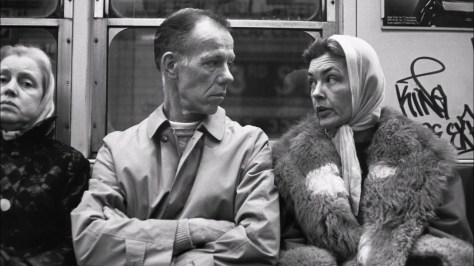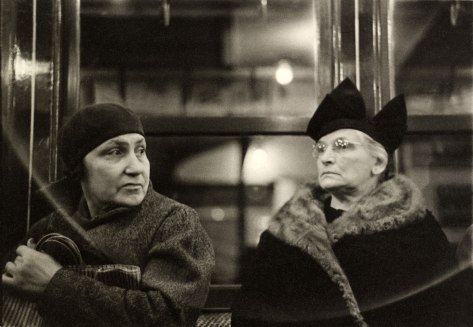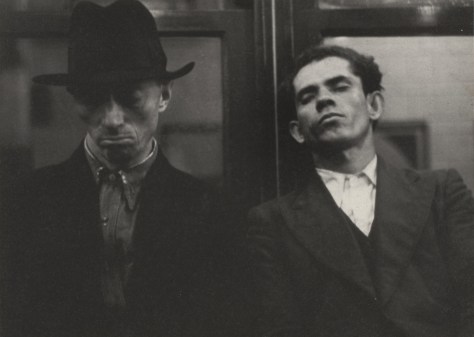In the mid-20th Century the mindset appears to have changed. There are still many photographers who travel and take the sort of images described in Journeys – 1. But there are a group who travel for different reasons. Some travel just to look (and take photographs along the way). Some travel to tell stories about the places, not just the famous places and the rich people but the ordinary places, the ordinary lives, the little things.
Many of the American photographers have been motivated by a road trip. It became easier with the advent of cars and lighter weight equipment available from the early to mid-20th century. The start of this was probably the travelling done with the FSA by Lange and Evans among others. Evans turned his work into the show at MoMA and then the accompanying book American Photographs. (Evans, 2012) He then accompanied Robert Frank on his American trip to make the photo-book The Americans. This was first published in 1959. Jim Casper said, ‘This is the photo book that redefined what a photo book could be – personal, poetic, real’ and quoted Kerouac (who wrote the introduction) as saying ‘Robert Frank… he sucked a sad poem right out of America onto film’ (Casper, s.d.). Unfortunately, this is a book I have not seen in its entirety. The images I have seen are stunning. I particularly enjoy looking at Funeral – St Helena, South Carolina, 1955 which shows a group of black Americans standing by the cars. Are they participants? Or chauffeurs?

All the photographers mentioned so far worked in black and white. Stephen Shore chose to move into colour for his book Uncommon Places (Shore, 2014). In many ways it is similar to the work of William Eggleston. Shore also shows small, inconsequential places, untidy crossroads, cars and diners which add up to an image of America in the 70’s. The images that I have seen are objective. The light is clear. A single image is interesting but unclear as to purpose. Looking at a string of them, they build up to tell the story of a particular place – America and a particular time – 1970’s.

More recently Alec Soth has travelled the Mississippi and shows the people and places in the early 21st Century. He also utilises the ordinary things of life. Many of his images are vividly coloured. I find the one Fort Jefferson Memorial Cross, Wickliffe, KY, 2002 particularly amusing. It shows four workmen standing around by a decrepit car. One carries a chainsaw. Are they tidying up the surroundings? Or planning to cut the cross down? In today’s climate the latter is entirely possible. Another Bonnie, Port Gibson, MS, 2000 shows a proud lady, seated, showing off her picture of sky and trees in an elaborate gold frame. The type of frame I associate with a museum piece, possibly a portrait in jewel colours.

It is not only the Americans who have chosen to use the metaphor of a journey to tell about a place. There are (at least) three books on the rivers in China.
Yan Wang Preston’s Mother River (Preston, 2018) tells the story of a journey along the Yangtze, from source to mouth about 6300 kilometres. She identified points every 100 kilometres along its length and went as nearly as possible to each of these points to photograph whatever she found. She made no attempt to take images at any famous way points unless they happened to fall on one of her predetermined markers. The series traces the social and geographic changes along the river. At one point she was bitten by a dog, at another refused access as (illegal) gold mining was taking place. As part of the project she did a series of performances though which she thought about the locality and the myth of a mother river. For example, she made a hand-drawn red circle, she carved stones and swam in the river. The images themselves vary from stunning landscapes, bleak and desolate, to snatches of dust laden roads. Where she could not reach the spot, she has included a blank page in the book. Sometimes she shows the people, playing pool, lounging in boats. She makes no attempt to prettify the scenes. It is what it is. You travel from the mountains, though plains and cities to the sea.
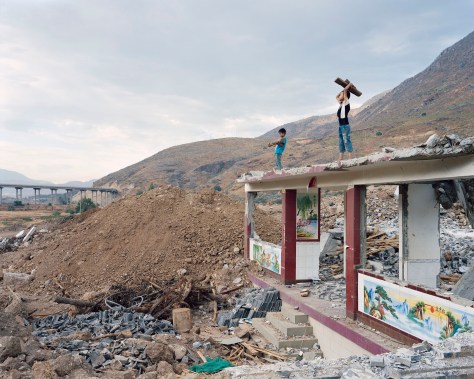
The Yellow River has recently been photographed by Zhang Kechun, where he shows a series of images that contrast the massive countryside with (usually) tiny people. In his description of the series he says ‘Mountains and rivers are very significant for the Chinese people. In this country there is a cultural awareness that says mountains are “virtuous” and rivers are “moral” …..I decided to take a walk along the Yellow River in order to find the root of my soul (Kechun, s.d.).

The Yangtze has also been photographed by Nadav Kandar who also chose to show humans as small against the vast surroundings. He is aware of the speed of change occurring in China, the beginning of a new era, the ‘smallness of the individual’ (Kandar, s.d.). He, like Kechun and Preston, has taken images of places that have been since changed beyond recognition by construction work.

These three works on China are talking about travelling, about change, about finding yourself against the backdrop of a vast land. They are almost the opposite of the American series discussed above. The immense versus the small, the country versus the individual. The impersonal versus the personal. Preston comes nearest to linking them with her images of the people she finds on the way, the bedrooms and eating places.
There are as many ways of photographing journeys as there are photographers who are willing to undertake them. These are a small snapshot, and mainly of the epic journeys. The ones that take years, and multiple visits. Small and private journeys can be equally revealing of the place, the people, and the photographer. In Echo Mask (Levitt, 2019) Jonathan Levitt shows images, mostly black and white with a few colour, interspersed with blocks of text that read as prose poems. They were taken in the Maritime Northeast of Maine and Newfoundland. Many of the images are blurry. They evoke a mood. A memory. They tell a different type of story, but it is also a journey, this time in the mind.

The work of Paul Gaffney in We Make the Path By Walking is also a slow meditation on time and space. He talks about the experience of moving slowly though the countryside, being in a ‘continuous dialogue’ with it. His latest work Perigee was made at night, under moonlight having previously documented his travels by Polaroid. In an interview for ASX Gaffney talks about the difference between the western approach to landscape as a linear perspective rather than the Eastern approach of trying to get across the essence of the place (Shinkle, 2016). His images are superficially simple. But the longer you look the more you see. This is something I would want to be able to do.

References:
Casper, J. (s.d.) The Americans – Photographs by Robert Frank. At: https://www.lensculture.com/articles/robert-frank-the-americans (Accessed 22/07/2020).
Evans, W. (2012) American photographs. (75th-anniversary ed ed.) New York, NY: Museum of Modern Art.
Kandar, N. (s.d.) Yangtze: The Long River. At: https://www.lensculture.com/articles/nadav-kander-yangtze-the-long-river (Accessed 24/07/2020).
Kechun, Z. K. | (s.d.) The Yellow River. At: https://www.lensculture.com/articles/zhang-kechun-the-yellow-river (Accessed 24/07/2020).
Levitt, J. (2019) Echo mask. Turkey: Charcoal Press.
Preston, Y. W. (2018) Mother River. Ostfildern: Hatje/Cantz.
Shinkle, E. (2016) An Interview with Paul Gaffney. At: https://americansuburbx.com/2016/04/an-interview-with-paul-gaffney.html (Accessed 25/07/2020).
Shore, S. (2014) Uncommon places: the complete works. (2nd revised edition) (s.l.): Thames and Hudson.


